Does Alcohol Cause Cancer?
In July 2016, Dr. Jennie Connor, physician and chair in Preventive and Social Medicine at the University of Otago Medical School in Dunedin, New Zealand, released the study Alcohol Consumption as a Cause of Cancer.
Lost your password? Please enter your email address. You will receive a link to create a new password.
In July 2016, Dr. Jennie Connor, physician and chair in Preventive and Social Medicine at the University of Otago Medical School in Dunedin, New Zealand, released the study Alcohol Consumption as a Cause of Cancer.
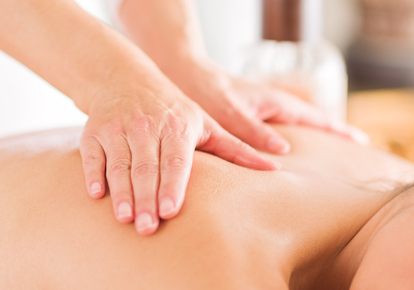
Oncology massage is simply a massage in the context of someone going through cancer treatment. The most common cancer treatments are surgery, radiation and chemotherapy. Because these treatments often leave “injured areas” such as surgical incisions, radiation burns and general system fatigue, we have to know how to work with these conditions, to be able to give a good massage without hurting them. Studies have also shown that individuals that receive massage require less anti-nausea and pain reducing medication.
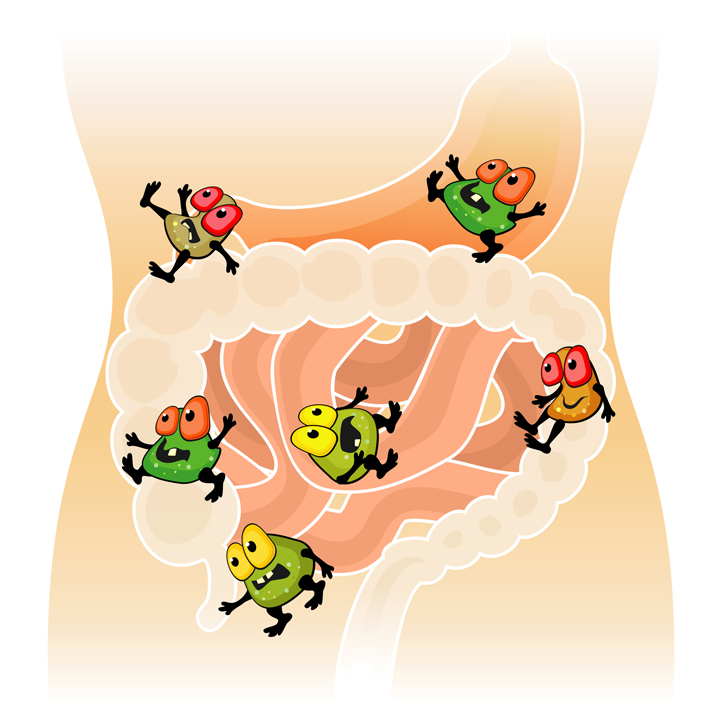
One of our favourite games as kids is now one of the most powerful determinants of sickness or health – the cops and robbers in our intestinal tract – better known as “good bacteria” or “bad bacteria”. Over the last ten years, the function of our “gut microbiome”, is finally gaining the research and respect that it so deserves.

There is a lot of research, clinical data and statistics related to cancer – types, causes, and treatments – available to anyone interested in looking them up. There are, of course, the usual suspects /causes of cancer (more on that later). But there could be a case made out to look beyond the obvious. Scratch deeply and look below the surface. There is another omnipresent trigger we lug around and don’t give this Machiavellian it’s due. It coexists as both cause and effect, feeds off us, is often suppressed, and is usually the last to be addressed, if at all.
‘Unaddressed and unresolved emotions’.
 The source of these could be singular, or more likely, multiple. Cracking or crumbling relationships, pressures of work (often tied up with a sense of ‘worth’ & ‘success’), irritants at home (from the mundane to the serious), overwhelming sense of responsibilities as a spouse, parent, child, maintaining a lifestyle, etc. come to mind easily. This tangle slowly and silently claws away at body, mind and soul. Some may immediately label it ‘Stress’. But this emotional web can manifest in other physio-psychological avatars too. It is silent and deadly. It attacks all systems- skeletal, muscular, nervous, circulatory, etc. All organ systems on one hand, and cognitive and emotional on the other, interfering with and impairing our quality of living and coping abilities. While one needs to clearly distinguish and recognize medical reasons for what they are, the truth is, this silent trigger is omnipotent. Abstract though it may seem, emotions wield the power to mess with our tangible systems. They have the capability of producing unwanted, negative, and damaging results in the human body. Sometimes, drastically so.
The source of these could be singular, or more likely, multiple. Cracking or crumbling relationships, pressures of work (often tied up with a sense of ‘worth’ & ‘success’), irritants at home (from the mundane to the serious), overwhelming sense of responsibilities as a spouse, parent, child, maintaining a lifestyle, etc. come to mind easily. This tangle slowly and silently claws away at body, mind and soul. Some may immediately label it ‘Stress’. But this emotional web can manifest in other physio-psychological avatars too. It is silent and deadly. It attacks all systems- skeletal, muscular, nervous, circulatory, etc. All organ systems on one hand, and cognitive and emotional on the other, interfering with and impairing our quality of living and coping abilities. While one needs to clearly distinguish and recognize medical reasons for what they are, the truth is, this silent trigger is omnipotent. Abstract though it may seem, emotions wield the power to mess with our tangible systems. They have the capability of producing unwanted, negative, and damaging results in the human body. Sometimes, drastically so.
A long, relaxed conversation with a cancer survivor friend brought this aspect to the fore yet again. He has overcome cancer twice and tried all treatments – mainstream and alternate, including adopting a complete lifestyle change which most of us can only aspire to. But there remains an unaddressed issue. After years spent on this journey of cancer, getting on and off track, he calmly mentioned this point in relation to his experience of it. It was interesting to hear him analyze his own life experiences. Aware of what’s impacting him (acknowledging the source of his emotional drain), he recognizes the need let it go, and admits that he hasn’t been able to yet. Driven by his emotional moorings, he hasn’t been able to sever this source of recurring negativity in his life despite nudging by family, friends, healers and a few doctors.
He further went on to calmly say that till such time as he lets go, he is not fighting the root causes of cancer completely. (I say ’causes’ so as not to make an oversimplified case of cancer triggers, especially in relation to emotional health, nor is it my intention to present this as a thought in conflict with medical advice or challenge it.) He intends to seriously weigh the worthiness of continuing with this emotional baggage and its impact on his body.
He isn’t the first person – or the last – to have mentioned this connection. There is something more than pure abstraction at play here. And it’s worth acknowledging the elephant in the room. We are, after all, feeding it and it is rolling its weight all over us. Emotions impact us and negative emotions more so. Our bodies respond in myriad ways trying to combat it. Labored breathing, racing/irregular heart beat (cardiovascular), tight muscles (muscular), tingling in fingers/toes (neural), aches and pains (skeletal and muscular), compromised digestion, high/low blood pressure (other body systems)… these are just some common perceptible symptoms and responses to our altered emotional states. We have all experienced them to varying degrees and at different points in our lives. Not to mention what happens to our (emotional) responses and thought process.
It becomes a cause of concern when this altered state continues for a longer period of time. The body appears to adapt and these symptoms become silent and internal in nature. The impact, meanwhile, continues on a wider, cellular level, and various manifestations of this silent aggressor may emerge over a period of time, including possibly, as cancer.
Does it mean all cancers are somehow the result of negative emotions or negative emotions will always lead to cancer? There is no definite, categorical ‘Yes’ as an answer. But, it could prove helpful investigating and addressing how our underlying emotive states may be leaving us exposed to greater possibility of serious health conditions, including cancer, along with all other clinical causes. As a precautionary tool, I reckon paying attention to emotional health plays a rather important role. We know that a healthy and fit lifestyle has so many advantages in serving as prevention for many health conditions. ‘Fitness’ needs to encompass emotional and mental health (strength and fortitude) too, by constantly sieving out the negative and enhancing the positive. It requires acknowledgement and working upon, with a conscious approach. As a cancer coping mechanism, focusing on positive emotional health and reducing negative (draining/sapping/unhappy/stressful/fearful) emotions plays a powerful role.
Emotions have the power to alter the human state at the conscious and subconscious levels. They can be an ally or a foe in our battle against ill health. They have the ability to align internal systems/processes to either facilitate or hinder external efforts.
So while one may refrain from an outright ‘yes’ to the question raised above, one cannot say an outright ‘no’ either. As science discovers deeper working of the human ecosystem, it is increasingly revealing the intertwining of our emotive state with our physical one.
Humans are emotional beings.
We cannot challenge it nor ignore the fabric that differentiates us. When one goes against the basic grain it creates friction. Prioritizing striving for a residual state of positive emotional health needs a deliberate plan and push. It is not easy. But neither is cancer nor its treatment. Using different techniques to spot and train our emotions, create emotional alchemy, makes sense now more than ever before, with different types of cancers spiraling and affecting all age groups, sometimes with the known triggers missing.
“Until you make the unconscious conscious, it will direct your life and you will call it fate.” –C. G. Jung
Originally printed on bodyinmotion.in. Reprinted with permission.
Vani Pahwa is a Functional Fitness specialist with over fifteen years of experience, and cutting-edge certifications from leading internationally-accredited and globally recognized fitness institutes. She is also a Cancer Exercise Specialist (perhaps one of the first in the country). Sought after for her multi-disciplinary fitness modules and expertise, Vani has conducted fitness workshops for leading corporate houses, conditioning and training camps for various sports communities, training programs for coaches, personal training programs for CEOs of multi-nationals, athletes, junior and senior sports professionals among others. Her combination of specialties, client profile and range, and extensive work experience makes her unique in the country. She is the founder of Body in Motion.
** If interested in further research on the topic you may read up related links including:

Exercise is important for everyone even individuals who have cancer. It is important to understand your body and know what you can do. An Exercise Specialist can help you to figure out an exercise plan that works for you. Everyone is unique and therefore needs an individualized exercise program.
It is important to notify your Exercise Specialist when you have treatments. The exercise program may need to be modified for a few days after treatment. Modification is important to help preserve energy and wellbeing. You may need to do two sets of an exercise instead of three for a training session or two. Exercise can help you to stay strong and relieve stress even if you are only able to do twenty minutes every other day.
There are also some precautions to take. While exercising, you may want to wear gloves. Wearing gloves helps you to keep your hands clean during workouts. This is important because the immune system is already weakened. Wiping equipment before use will also help you to be as clean as possible. It is important to wipe mats and dumbbells as well.
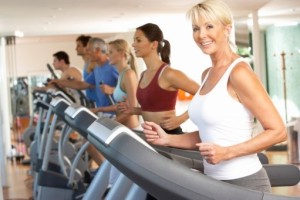 Start your exercise program slowly and progress when you are ready. Fitness is an individual journey and everyone starts at a different place. It is important to not compare yourself to others and keep focused on your goals. Your exercise prescription will depend on which phase of cancer you are in.
Start your exercise program slowly and progress when you are ready. Fitness is an individual journey and everyone starts at a different place. It is important to not compare yourself to others and keep focused on your goals. Your exercise prescription will depend on which phase of cancer you are in.
There are many ways that exercise can benefit individuals during treatment such as: maintaining your physical capabilities, lessen nausea, maintaining independence, improve quality of life, control weight, decrease anxiety and depression, and improve self-esteem.
When you are recovering from treatment you may notice that the side effects linger. Your Exercise Specialist will adjust your program according to how you feel. Eventually, you will be able to progress and feel less fatigued. It is important, however, to continue to be active after treatments have been discontinued. Research shows that there is less chance of cancer recurrence in active individuals.
Robyn Caruso is the Founder of The Stress Management Institute for Health and Fitness Professionals. She has 15 years of experience in medical based fitness. Contact Robyn by email at: tsmi.caruso@aol.com
References
American Cancer Society (2014). Physical Activity and the Cancer Patient. Retrieved http://www.cancer.org/treatment/survivorshipduringandaftertreatment/stayingactive/physical-activity-and-the-cancer-patient
Web MD (2007). Exercise for Cancer Patients: Fitness After Treatment. Retrieved http://www.webmd.com/cancer/features/exercise-cancer-patients?page=3
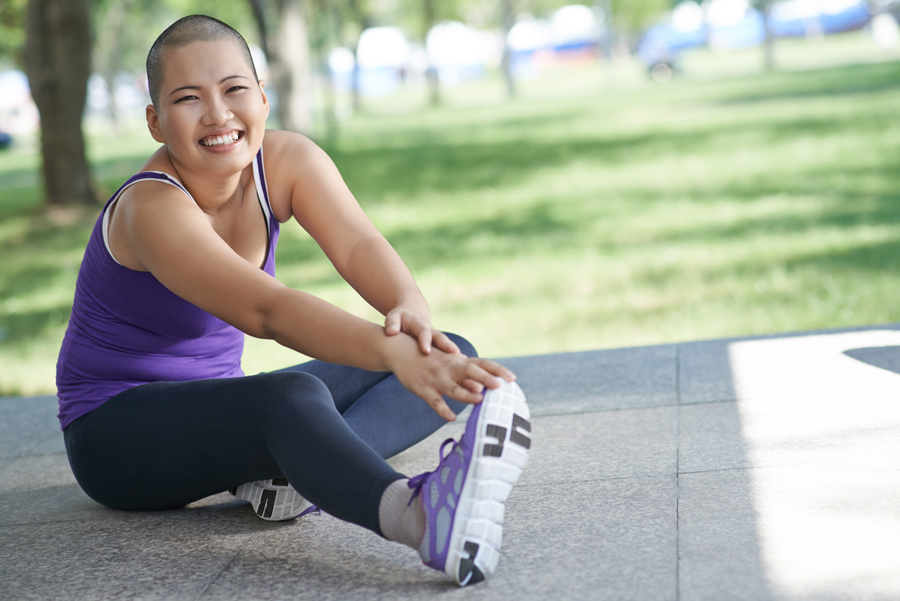
Cancer surgery and treatment often results in survivors suffering debilitating physical impairments. These can often be ameliorated by a good exercise program that has the added benefit of helping survivors to engage in those activities in which they participated prior to their diagnosis. This article addresses some of the physical side effects cancer survivors may face, including lymphedema and a series of safe and effective techniques to restore functional fitness for those with or at risk for lymphedema.
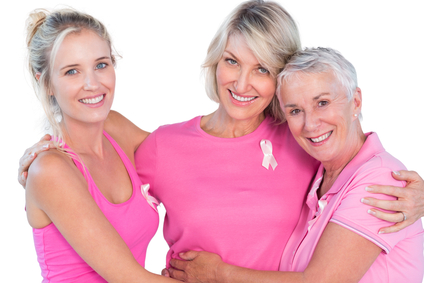
Surgery, chemotherapy, radiation, and hormonal therapy have side effects, which exacerbate the problems faced by cancer patients. Surgery can create adhesions that can limit range of motion, and cause pain, numbness and tightness. Removal of lymph nodes creates scars and may decrease range of motion. Radiation can cause fatigue, tightness and stiffness. It also can increase the risk of developing lymphedema. Chemotherapy may affect balance, a patient’s immune system, and cause neuropathy, fatigue, sarcopenia, and anemia. Hormonal therapy can cause joint pain and early menopause and the side effects associated with menopause.
Before beginning a cancer exercise program, a patient must receive medical clearance. A medical history, base line range of motion and girth measurements, and a general fitness assessment are taken. It is important to note that many exercises and movements may be contraindicated based on a person’s fitness assessment, medical conditions, and particular surgery. There are different exercises necessary for each type of reconstruction. For those who were active prior to surgery it is imperative to slowly work back up to the previous level of activity. It is not wise to go back to a gym and immediately continue with a pre-cancer exercise routine.
Research has shown that exercise is safe for cancer survivors, even those with or who are at risk for lymphedema. Dr. Schmitz stresses the importance of starting slowly and using proper form with a well trained certified professional. Her study demonstrates the importance of exercise after cancer with slow progressive improvement in order to decrease risk of lymphedema. The research shows that breast cancer survivors no longer have to give up activities that they enjoy doing and avoid activities of daily living. Aerobic exercise is essential to good health and we advise a patient to walk as much as possible. Initially, one might start by walking around their house or up and down their block and then slowly increasing the distance walked. Many physicians recommend that their patients try to walk during chemotherapy. This may decrease fatigue. If using aerobic equipment, make sure not to grip on the railing.
Unfortunately, there is no way to know which patients with lymph node dissection will get lymphedema. This makes it imperative to follow the established guidelines and take a prudent approach to exercise. Patients who have lymphedema need to progress slowly and use a properly fitted garment. Our goal is to promote physical activity without exacerbating lymphedema. Severe range of motion issues and cording problems are referred to lymphedema specialists. Moreover, measurement of the limbs that are at risk for lymphedema are performed frequently to make sure they have not changed in size. Symptoms can be managed easier if they are addressed promptly. Progress is monitored in order to make appropriate modifications to a patient’s program. It is important to learn the right exercises for a patient’s particular situation and how to do them properly and with good form. The patient should learn which exercises to perform, the sequencing, and quantity of repetitions. Exercise smartly and under professional guidance!
Lymphedema can be debilitating and painful and can affect the emotional health of the patient. Our bodies work better if engaged in regular physical activity, but it must be done in a safe manner if lymph nodes have been removed or radiated. A cancer fitness program for someone with lymphedema should begin as an individualized program. The patient must be supervised to make sure there are no subtle volume changes to the limb. Ultimately, we want a patient to be able to exercise on his or her own.
The starting point is a low impact exercise program, performing range of motion stretches and techniques to improve venous drainage. First, we elevate the affected area above heart level. Over time, stretches are incorporated until a patient can achieve 80% of range of motion. At that point, we start adding strength training. A stretching program for those with upper body lymphedema begins with moving or stretching the neck and shoulder areas. If a patient is still healing from breast cancer surgery, begin with pendulum arm swings. The arm is then moved and stretched in all directions, going across the chest and behind the head and back. Stretches that move the arms in shoulder flexion, extension, abduction, and adduction are added. Finally internal and external rotations are addressed. Patients suffering from fatigue can perform many of the stretches while in bed. An easy-to-follow DVD is Recovery Fitness Simple Stretching, which can be found on www.recoveryfitness.net.
All of the exercises incorporate abdominal breathing, which can stimulate lymphatic drainage. This intra-abdominal pressure may help move sluggish lymph fluid, stimulate lymph flow, and act as a lymphatic system pump. This type of breathing enables oxygen to get to the tissues. Abdominal breathing and relaxation breathing, along with the proper exercises can also reduce stress, a common cancer side effect. If weak, it may be best just to stretch and breathe deeply.
Strength training may help pump the lymph fluid away from the affected limb. Exercise helps the lymphatic fluid to April / June 2013 ~ NATIONAL LYMPHEDEMA NETWORK 13 move. Muscles pump and push the lymph fluid and can help move the lymph from the affected area. Strength training may also strengthen the arm so that it can handle those activities that may have otherwise led to swelling with a greater level of ease. Always wear a sleeve and stop if there is swelling or pain. Start with light weights and slowly increase repetitions and eventually weight.
Cancer survivors should follow a systematic and progressive plan. Exercise starts with a warm-up and cool down. Begin with deep breathing. Keeping a strong core should be emphasized. It is important to remember that following treatment the body may have become weaker. Even if a patient had exercised using 10 pound weights before surgery, if one is at risk for lymphedema they must start with a light weight. We teach patients to always listen to their bodies and to stop if they feel tired or if their limb aches or feels heavy. Patients must be aware of any changes in their body.
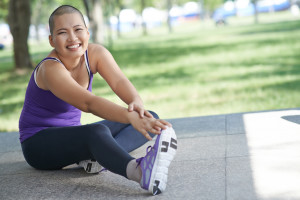 Progression of exercise should be gradual. A deconditioned person should start without using any weight and concentrate on proper technique. If 8-10 repetitions can not be executed, repetitions should be decreased or the weight lowered or resistance band used changed to less resistance. The exercise routines have to be adapted for the day-to-day changes that that can affect the ability to work out. Our program will start using a very light weight, with few repetitions, typically 10. In subsequent sessions, patients can add repetitions. After performing 2 sets of 10 repetitions with no problem then a small amount of weight may be added in 1 pound increments. We also alternate between a strength training exercises with a stretch for each muscle group and to alternate an upper body and lower body exercises. Pilates exercises are great way to incorporate deep breathing with strengthening the core. The deep breathing helps to pump lymphatic fluid and will also help reduce stress.
Progression of exercise should be gradual. A deconditioned person should start without using any weight and concentrate on proper technique. If 8-10 repetitions can not be executed, repetitions should be decreased or the weight lowered or resistance band used changed to less resistance. The exercise routines have to be adapted for the day-to-day changes that that can affect the ability to work out. Our program will start using a very light weight, with few repetitions, typically 10. In subsequent sessions, patients can add repetitions. After performing 2 sets of 10 repetitions with no problem then a small amount of weight may be added in 1 pound increments. We also alternate between a strength training exercises with a stretch for each muscle group and to alternate an upper body and lower body exercises. Pilates exercises are great way to incorporate deep breathing with strengthening the core. The deep breathing helps to pump lymphatic fluid and will also help reduce stress.
Every patient is unique. Many patients have pre-existing medical issues. The exercise program should be modified to accommodate all body types and needs. Some might need pillows for comport or postural problems. Also if osteoporosis is an issue, a cancer therapist should have experience working with this population. Always monitor the affected limb. Look for feelings of fullness or aching. We do not want to overwhelm the lymphatic system. Drink plenty of water and stop immediately if any pain. Lymphedema patients should elevate their limbs after a session.
Learn which aerobic exercises are considered safe. Walking, biking, and swimming are considered very safe. Hot tubs, pools, and warm lakes may increase risk of infection. In choosing an activity, consider the risk of injury, prior medical condition, and fitness level. Injuries can create further complications for those with lymphedema. It is still unclear whether certain sports can be safe. For example, tennis can put a lot of stress or repetitive activity on one’s limbs. It is important to know if the activity was something performed prior to lymphedema. If the patient wants to resume the activity in order to exercise, have fun, and to have good quality of life, a sports fitness program can be instituted. This should be performed under medical guidance. In a sports fitness program, the muscles used in the sport are progressively strengthened so that the sport can be resumed. Patients must use caution as they return to a sport.
One of the most important things that can be done to decrease the risk of lymphedema is to keep weight at a good level. Those individuals with whom I have worked who have had lymphedema typically see a marked reduction of swelling in conjunction with weight loss. My students who are successful in losing weight have the most success in lymphedema control. Proper nutrition is important and decrease salt intake. Evidence suggests numerous benefits of exercise: improved fitness level, physical performance, quality of life, and less depression and fatigue. Exercise is part of a healthy lifestyle and will help in weight control and emotional health. There are exercise programs that are targeted at cancer survivors but not all of them will meet the needs of someone at risk for lymphedema.
My goal is for cancer survivors to participate in individually structured and group exercise programs at all cancer centers or facilities close to their homes.
Article reprinted with permission from Carole J. Michaels.
Carol J. Michaels is the founder and creator of Recovery Fitness® LLC, located in Short Hills, New Jersey. Her programs are designed to help cancer survivors in recovery through exercise programs. Carol, an award winning fitness and exercise specialist, has over 17 years of experience as a fitness professional and as a cancer exercise specialist.

Once a virtual death sentence, cancer today is a curable disease for many and a chronic illness for most. With continued advances in strategies to detect cancer early and treat it effectively along with the aging of the population, the number of individuals living years beyond a cancer diagnosis can be expected to continue to increase.
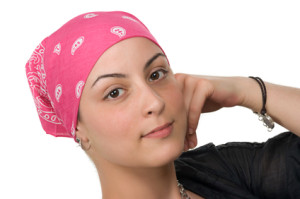 Approximately 15.5 million Americans in the United States are cancer survivors. By 2026 that number is expected to reach 20 million. Anyone who has been diagnosed with cancer, from the time of diagnosis through the rest of his or her life is considered a cancer survivor. And while not all cancer survivors are older adults, many are simply because of the cumulative effect of years of lifestyle issues that are risk factors for their disease. Survivors less than or equal to 19 years old comprise 1% of the cancer survivor population, 6% of survivors are aged 20–39 years, 33% are aged 40–64 years and 60% (more than half) are aged greater than or equal to 65 years.
Approximately 15.5 million Americans in the United States are cancer survivors. By 2026 that number is expected to reach 20 million. Anyone who has been diagnosed with cancer, from the time of diagnosis through the rest of his or her life is considered a cancer survivor. And while not all cancer survivors are older adults, many are simply because of the cumulative effect of years of lifestyle issues that are risk factors for their disease. Survivors less than or equal to 19 years old comprise 1% of the cancer survivor population, 6% of survivors are aged 20–39 years, 33% are aged 40–64 years and 60% (more than half) are aged greater than or equal to 65 years.
Breast cancer survivors are the largest constituent group within the overall population of cancer survivors (22%), followed by prostate cancer survivors (19%) and colorectal cancer survivors (11%) (3). Gynecological and other genitourinary cancers each account for 9% of cancer survivors, followed by hematological cancers and lymphoma (7%) and lung cancer (4%). Other cancer sites account for much smaller percentages and together are responsible for 19% of the total number of survivors. In terms of stratification by gender, more than two thirds (69%) of all female cancer survivors have a history of breast (41%), gynecological (17%) or colorectal (11%) cancer. For male survivors, two thirds (66%) have a history of prostate (39%), other genitourinary (such as testicular or renal) (14%) or colorectal (13%) cancer.
Not surprisingly, cancer survivors are often highly motivated to learn more about things like nutrition, supplements and herbal remedies, and exercise that might improve treatment outcomes and ultimately their survival and quality of life. For many of the most important nutrition and physical activity questions faced by cancer survivors, the scientific evidence comes only from observational and laboratory animal data, or unreliable reports from poorly designed clinical studies. Moreover, the findings from these studies are often contradictory. Very few controlled clinical trials have been done to test the impact of diet, nutritional supplements or nutritional complementary methods on cancer outcomes among cancer survivors.
In an effort to identify and evaluate the scientific evidence related to optimal nutrition and physical activity after the diagnosis of cancer, the American Cancer Society (ACS) convened a group of experts in nutrition, physical activity and cancer. The findings of this group guide healthcare providers, cancer survivors and their families through the mass of information and help them make informed choices related to diet and exercise. The Expert Committee reviewed all of the scientific evidence and best clinical practices for different types of cancer and “graded” both the quality and certainty of the scientific evidence for factors affecting the most common cancers. As was already mentioned, there are few clear answers to many questions, a wide range of sources and often conflicting information. But, these experts agree that even when the scientific evidence is incomplete, reasonable conclusions can be made that can help to guide choices in the areas of nutrition and physical activity.
Physical activity may help cancer patients build up their physical condition; decrease the number of comorbid conditions (like heart disease and diabetes); reduce drug interactions; help cancer patients cope with treatment; restore good health; improve quality of life during and after treatment; and help cancer patients and survivors maintain independence as long as possible
Physical rehabilitation programs similar to those for cardiac rehabilitation may be effective in managing, controlling or preventing adverse medical and psychosocial outcomes manifested during cancer survivorship. For example, exercise programs are being developed as interventions to improve the physical functioning of persons who have problems with mobility as a result of therapy and are also being shown to be efficacious for weight control after breast cancer treatment, lessen the effects of chronic fatigue, improve quality of life, prevent or control osteoporosis as a result of premature menopause and prevent or control future or concurrent comorbidities.
Diet, weight and physical activity interventions carry tremendous potential to affect length and quality of survival in a positive manner and prevent or control morbidity associated with cancer or its treatment.
 In general, physical activity is likely to be beneficial for most cancer survivors. Recommendations on the type, frequency, duration and intensity of exercise should be individualized to the survivor’s age, previous fitness activities, type of cancer, stage of treatment, type of therapy, and comorbid conditions.
In general, physical activity is likely to be beneficial for most cancer survivors. Recommendations on the type, frequency, duration and intensity of exercise should be individualized to the survivor’s age, previous fitness activities, type of cancer, stage of treatment, type of therapy, and comorbid conditions.
Particular issues for cancer survivors may affect or contraindicate their ability to exercise. Effects of their cancer treatment may also promote the risk for exercise-related injuries and other adverse effects.
The following specific precautions are from the American Cancer Society:
For the general population, the ACS and other health organizations recommend at least 30 minutes of moderate physical activity at least 5 days per week to reduce the risk for cancer, cardiovascular disease and diabetes. These levels of activity have not been studied or tested specifically in cancer survivors, however. For the general population and for cancer survivors, any movement is likely beneficial. Therefore, although daily and regular activity may be preferred and may be a goal, any steps that are taken to move from a sedentary to an active lifestyle should be encouraged. For survivors wanting maximum benefit, the message should be that the health benefits of exercise are generally linear, with benefit related to higher intensity and duration, although extremely high levels of exercise might increase the risk for infections.
Tammy Petersen, MSE, is the Founder and Managing Partner for the American Academy of Health and Fitness (AAHF). She’s written a book on older adult fitness and designed corresponding training programs. SrFit Mature Adult Specialty Certification is used nationwide as the textbook for a college based course for personal trainers who wish to work with mature adults. SrFit is also the basis for a specialty certification home study course that qualifies for up to 22 hours of continuing education credit with the major personal trainer certification organizations.

Did you know that by adjusting your nutrition you can feel better and stay stronger during cancer treatment? Both the cancer and the cancer treatment can affect your appetite, your ability to tolerate foods, and your body’s ability to utilize nutrients. By having a dietitian or nutritionist on your treatment team, you’ll be better prepared to cope with side effects and meet your nutrition needs during this difficult time.
 Some cancer treatments can lead to weight loss while others can lead to weight gain. Weight loss may be due to a loss of appetite and/or an inability to tolerate food, while weight gain may be related to fluid retention, increased appetite and/or decreased physical activity. If cancer treatment is making it difficult for you to manage your weight, ask an dietitian or nutritionist to join your treatment team. You won’t regret it!
Some cancer treatments can lead to weight loss while others can lead to weight gain. Weight loss may be due to a loss of appetite and/or an inability to tolerate food, while weight gain may be related to fluid retention, increased appetite and/or decreased physical activity. If cancer treatment is making it difficult for you to manage your weight, ask an dietitian or nutritionist to join your treatment team. You won’t regret it!
Many herbs and other supplements are marketed to people who are going through cancer treatment. Always talk to your oncologist before adding any herbs or supplements to your treatment regimen. Some herbs and supplements can cause harmful side effects and interfere with proven cancer treatments such as chemo and radiation.
For a detailed description of herbs and supplements and any evidence supporting their effectiveness and safety, visit nccam.nih.gov/health/atoz.htm. Your oncologist and a dietitian/nutritionist can help you sort through this information and make an informed decision about whether or not take any herbs or other supplements.
Kristy Richardson is a dietitian and exercise physiologist, specializing in sports nutrition and weight management, She is the founder of OC Nutrition and also works as a nutrition professor at Fullerton College.
References
American Cancer Society (2012). Nutrition for the Person with Cancer During Treatment: A Guide for Patients and Families. Retrieved November 4, 2013, http://www.cancer.org/acs/groups/cid/documents/webcontent/002903-pdf.pdf.
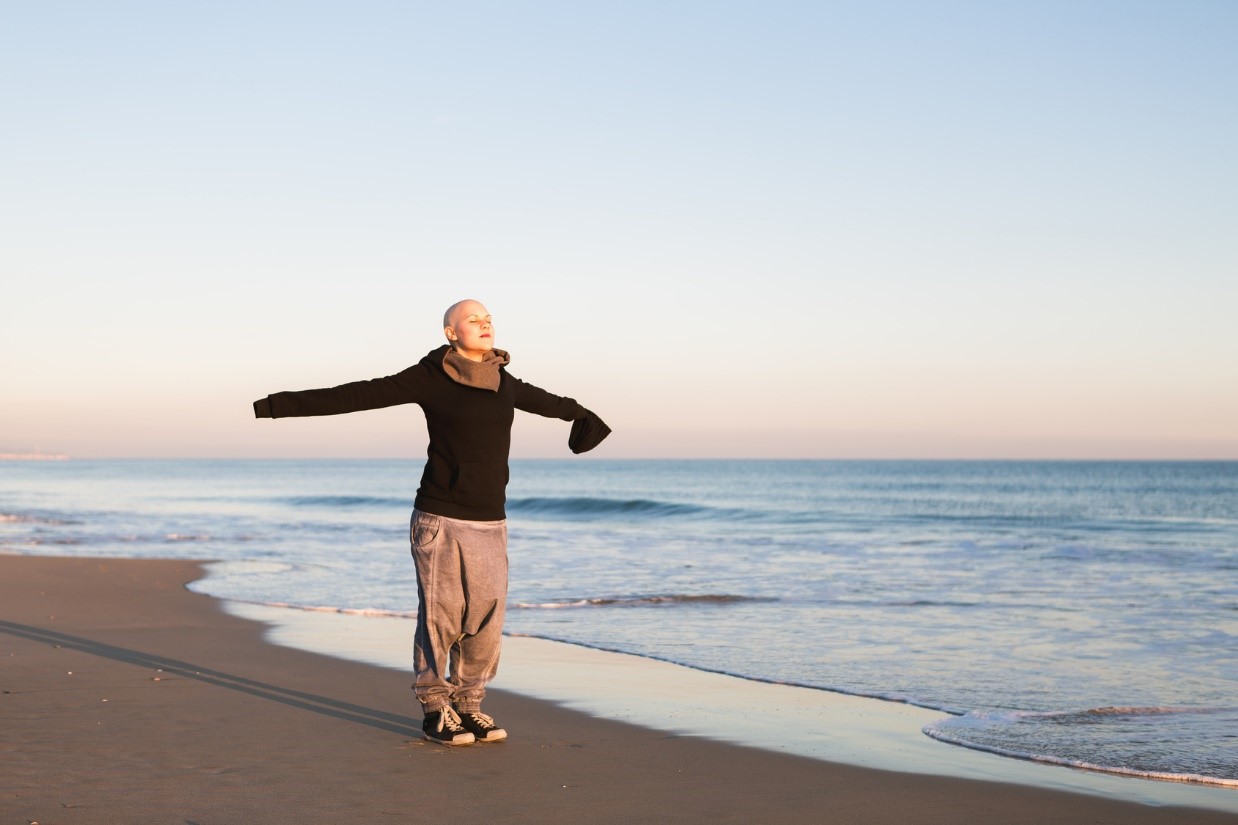
“CANCER”. For those who are not diagnosed with this condition, just saying the word out loud to yourself highlights many negative connotations associated with it.
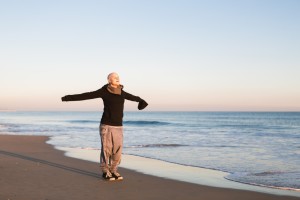 We all consider the undesirable aspects associated with cancer and think to ourselves how lucky we are not to have that added stress in our life. But what about those who are diagnosed with cancer?
We all consider the undesirable aspects associated with cancer and think to ourselves how lucky we are not to have that added stress in our life. But what about those who are diagnosed with cancer?
Life can already be quite overwhelming when considering the financial strains, family events and various appointments scheduled into each day. But then add cancer into the mix and what do you get? You get a situation that can be very debilitating both physically, socially and emotionally, and can cause an array of adverse behaviours such as excessive alcohol consumption, sedentary behaviour and smoking. There is some evidence to suggest that elevated stress levels heighten the inflammatory response associated with stress hormones which may be directly related to cancer development and growth, however, there is an abundance of research showing an in-direct link between stress and cancer growth due to the adverse behaviours mentioned above. Thus, having the ability to conquer stress, identify the best way for you to deal with stress, and to become resilient to it will positively impact the management of your cancer and the fighting process.
So we know that stress and anxiety are typically elevated in people with cancer, and we know through available research that we need to lower or eliminate these stress levels to stop risky adverse behaviours associated with stress, but how do we go about doing that?
Recently at our training studio we began an exercise program for clients diagnosed with cancer called Lift For Life. Our trainers discussed the idea of stress and anxiety with our cancer clients and what that means to them. During our discussion we identified many situations which cause stress in their lives, both related and not related to cancer. Some of these situations were:
After identifying what causes heightened stress levels, we brainstormed ideas we could implement to help overcome such stresses:
We recognize that stress factors in to a large degree. In the treatment of this deadly disease, and while we see the need for exercise and nutrition, there must also be a focus on improving the lifestyle habits and the personal ability of the person to be mentally healthy as well. Far too many programs focus on just the physical component or treat the physical symptoms, neglecting the importance of addressing the psychological and emotional needs to assist the body in healing itself. This is why our program is designed around exercise and education. There is an abundance of research illustrating the physical, health and emotional benefits of exercise for those suffering and over-coming cancer. Cancer brings with it atrophy, osteopenia, increased risk of cardiovascular disease and falling. The benefits of exercise and stress reduction can help alleviate many of these ancillary negative conditions associated with cancer. Some of these benefits include:
After the Lift For Life brainstorming session I had with my cancer clients I was surprised to find that no one had identified what I perceived as being the most important elements in overcoming stress and anxiety. Exercise and rhythmic breathing. Of course once I mentioned this, all clients agreed that these were both extremely important.

It is at this point you may be thinking “yes I know about the importance of exercise and the benefits associated both physically and mentally, but what has breathing got to do with it?”
When I think of someone being stressed or anxious, I picture someone hyperventilating into a brown paper back and trying to slow down their breathing. Most people who are stressed are stuck in a constant state of over breathing and hyperventilation. Often when people are stressed they are told to “take a deep breath and relax”. This is, however, quite problematic as this action reinforces anxiety and stress symptoms by overstimulating the sympathetic nervous system, and eventually causes habitual over breathing actions. Even when the stress is no longer present, a person will continue to breathe this way as this is how they have taught themselves to breath. Dr James Mercola (of the Game Changer) emphasizes this further when he stated “When you feel tense and anxious, the sympathetic fight-or-flight aspect of your nervous system turns on, quickening your breathing and increasing your heart rate, blood pressure and stress hormone production. Uncontrolled, rapid, chest-oriented respiration can actually initiate your sympathetic nervous system — even if no other stress factors are present — locking you into a state of breathing-induced stress”. Hence, learning how to breathe slowly and softly through the nose is critical.
There are many breathing exercises which can help to reduce stress levels, improve your health and calm your body. A simple breathing exercise which can be done anywhere and has been reported to help reduce stress and anxiety symptoms is as follows:
The 4-7-8 breathing technique taught by Dr Andrew Weil is also quite effective in reducing stress levels and regulating your breathing.
We must acknowledge the damage that stress can cause on our health and when we are already in a state of poor health, a little bit more than normal is enough to create more problems. Stress cannot be avoided for it is something we will all encounter at many times in our lives. However, being stuck in an extended state of stress will do serious damage to your body. Learning different strategies and having tools and resources to combat the symptoms associated with stress and anxiety are essential in the prevention and treatment of cancer as well as all kinds of other health problems and diseases.
References:
http://www.mercola.com/
http://www.cdc.gov/
Cancer Council Australia
Nick Jack is owner of No Regrets Personal Training a Rehabilitation & Sports Training Studio located in Melbourne Australia. Having worked as a Trainer for over 10 years and has qualifications as a CHEK Exercise Coach, CHEK Golf Performance Specialist & Master Rehab Trainer and Twist Conditioning Sports Conditioning coach he specializes in working with rehabilitation and injury prevention programs. You can check out his website at www.noregretspt.com.au